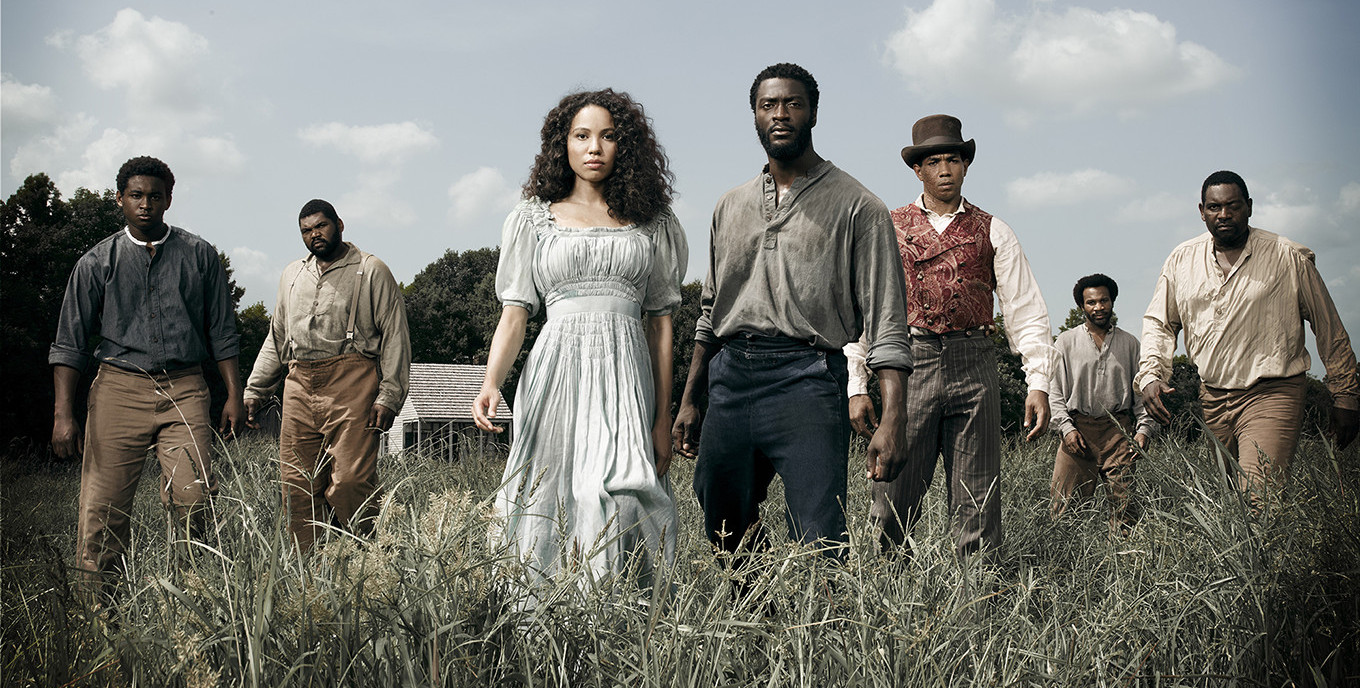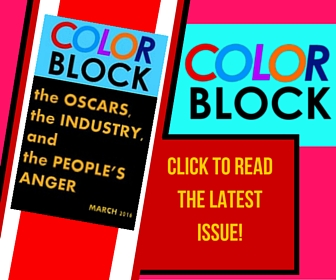Did you watch WGN America’s Underground Wednesday night? I did, and it was everything I’d hoped it would be, and it still surprised me with just how much information and action they managed to pack into an hour. I was so tense throughout the hour, I was tired afterwards.
There are multitude of reasons to be a huge fan of Underground, but I’ll provide you with four great reasons you should watch the show and use it as a platform to deepen your understanding about slavery and the issues that continue to plague America.
1. Underground makes slavery relevant to today’s issues again
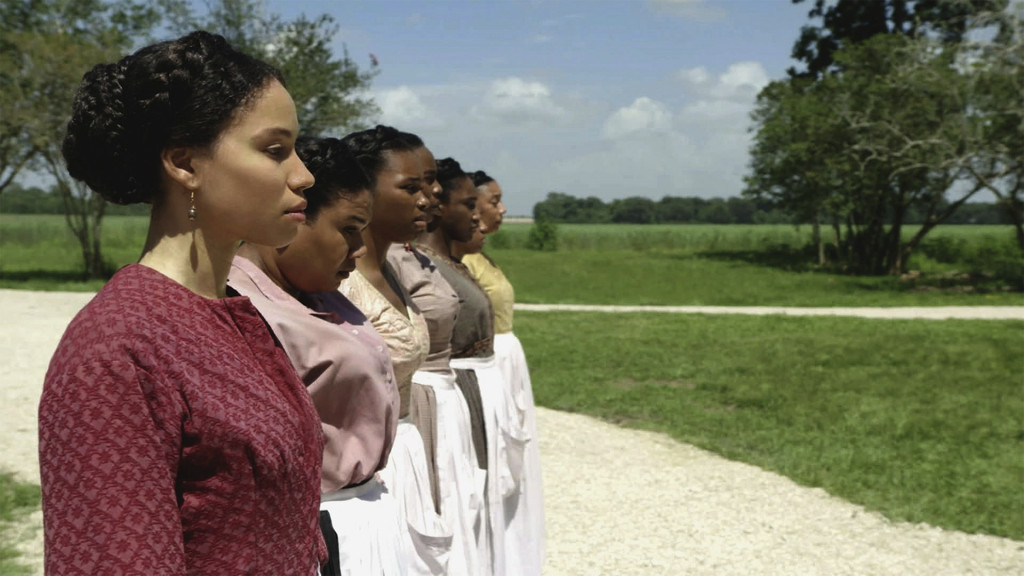
The one thing that has hurt slavery narratives in the past is that they were always told in a past, passive tense. Slavery is something that ended roughly 200 hundred years ago, but some of the narratives put in the media about slavery would make people think that the effects of slavery aren’t in effect today. Surprise, surprise for those who didn’t know this, but the effects of slavery have always been effect because there’s still two Americas within the same country. There’s still the feeling that one aspect of America doesn’t want to listen, or doesn’t care to listen, to other viewpoints. The after-effects of slavery show themselves in economic inequality, police brutality, white flight in neighborhoods, gentrification in urban areas, pay inequality, the denial of basic human rights both in the justice system and in social aspects (like allowing Flint, MI residents, many of whom are black, to drink lead-filled water from the polluted Flint River while Detroit gets its water from a different source).
What Underground does through various modes of storytelling and the usage of modern music (Kanye!) is bring slavery back to the present. Making the story modern makes the injustice that much more difficult to watch, and you can’t help but think about how this hateful practice of slavery still reverberates today. I think the handling of the characters and the story will make even the most casual and most “colorblind” of viewers wake up and think about what’s going on today and how they may or may not be playing a part in the continuing degradation of a people. In short, it’ll make folks think if they’re part of the solution or part of the problem.
2. Underground puts slaves at the forefront of their own story
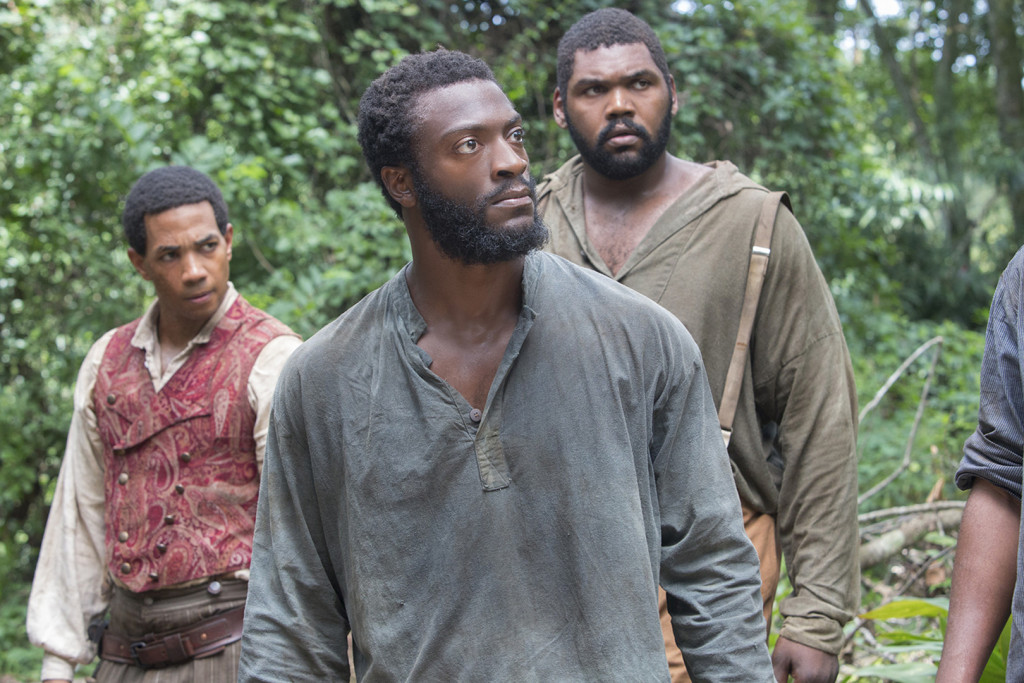
The most annoying thing about some films about slavery or discrimination in general is that the “good” white people are put at the center of the story. Daniel José Older (who I’ve interviewed on JUST ADD COLOR before!) wrote for Salon that the Oscar-lauded 12 Years a Slave still had a white savior narrative with Brad Pitt’s character Bass saving Chiwetel Ejiofor’s Solomon Northup:
“About three-quarters through the movie Brad Pitt suddenly sohws up and, essentially, saves the day. Never mind that Pitt is also one of the film’s producers…In this otherwise monumental and groundbreaking film, written and directed in the age of stop-and-frisk and ‘stand your ground,’ of Trayvon and Aiyanna and Marissa and Renisha, did we really need yet another white savior narrative? We absolutely did not.”
Older also brings up Lincoln, which featured the idea that Abraham Lincoln and Lincoln alone fought for the rights of slaves, instead of showing the layered and multi-faceted effort it took to get Lincoln to actually consider ending slavery, an effort which involved abolitionists like Frederick Douglass.
“Steven Spielberg’s ‘Lincoln’ erased Frederick Douglass, reinforcing the tired notion that a singular white man, through the sheer force of his moral conviction, brought slavery to an end. In ‘Lincoln,’ ans in ’12 Years,’ this cliché not only hobbles the film’s cultural relevancy, it is a narrative failure as well.”
The Help isn’t about slavery, but it still put Emma Stone’s character and her book writing journey at the center of the story, when the real story is about how these maids have been surviving amid the unchecked racism and unearned privilege of their white women “employers.” In all of these stories, the feelings of white America—of wanting to absolve white guilt, of wanting to appease an injured ego still coming to terms with slavery itself—are at the center, when their feelings, while valuable, aren’t the feelings we should be focusing on in these stories. The characterizations should revolve primarily around the characters who are most oppressed, the characters who are facing these uphill battles on a daily basis. The focus on the white experience of learning about oppression is also another thing that keeps some slave movies stuck in a passive tone; the act of an outsider looking into a new world is a passive one, since the outsider can throw away the experience at any point. The act becomes more of a professorial anthropological exercise than one actually immersing themselves to the point of a complete understanding. A call to action doesn’t come from studying a group from afar; it comes from feeling akin to that group, feeling like your well-being depends on their well-being.
Having the oppressed tell their own story is what gives a show like Underground its power. There are two white characters that do become part of the Underground Railroad, but it already looks like they aren’t set up to be “white saviors,” necessarily. They are part of the cogs of the Railroad, but the show isn’t depicting them as being the initial catalysts. In fact, the characters exemplify the difference between viewing slaves and slave rights as an anthropological study and feeling the call to action to actually help them. John Hawkes starts out as an abolitionists of sorts, but he’s still advocating for the law, which was set up to go against black people in the first place. Elizabeth, his wife, is initially against him advocating for slave rights, but once she visits John’s brother, the evil plantation owner Tom Macon, she sees a boy fanning her from the rafters. That boy, combined with her own desire for a family, changes her mind completely about slave rights. She finally sees herself in them and feels that call to action, which spurs her husband on to do the same. But, they are working in conjunction with slaves securing their own freedom; they’re not acting as shepherds herding a flock.
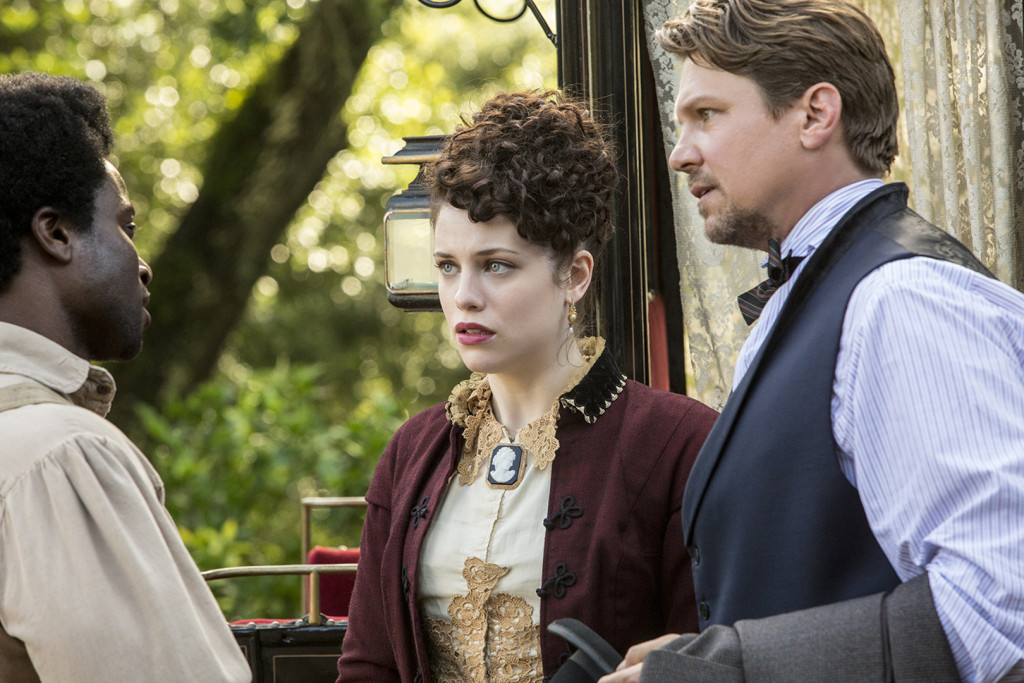
The slaves themselves, not John and Elizabeth, are the leads of this story. Aldis Hodge’s Noah is the one who is hell bent on getting to freedom, and he’s not planning on going alone; he’s taking a group of slaves with him. Jurnee Smollett-Bell’s Rosalee is, of course, going to go with him, but we see her come to terms with her place on the plantation and how clearly not-free she is, even though she works in the Big House. Much of this realization comes when Suzanna Macon, the “lady” of the house, starts talking about selling Rosalee’s little brother James. (Of course, there’s going to be the big realization that Rosalee and James are both Tom and Rosalee’s mother Ernestine’s children.) The slaves decide for themselves how they want the rest of their lives to play out, and they take action to make their dream of freedom come true. This makes Underground stellar television as well as a stellar take (and more truthful take) on the slave story.
(For another slave story with slaves actually at the forefront of their story, check out this Atlantic article on the film Sankofa.)
3. Underground highlights the insidious nature of white privilege
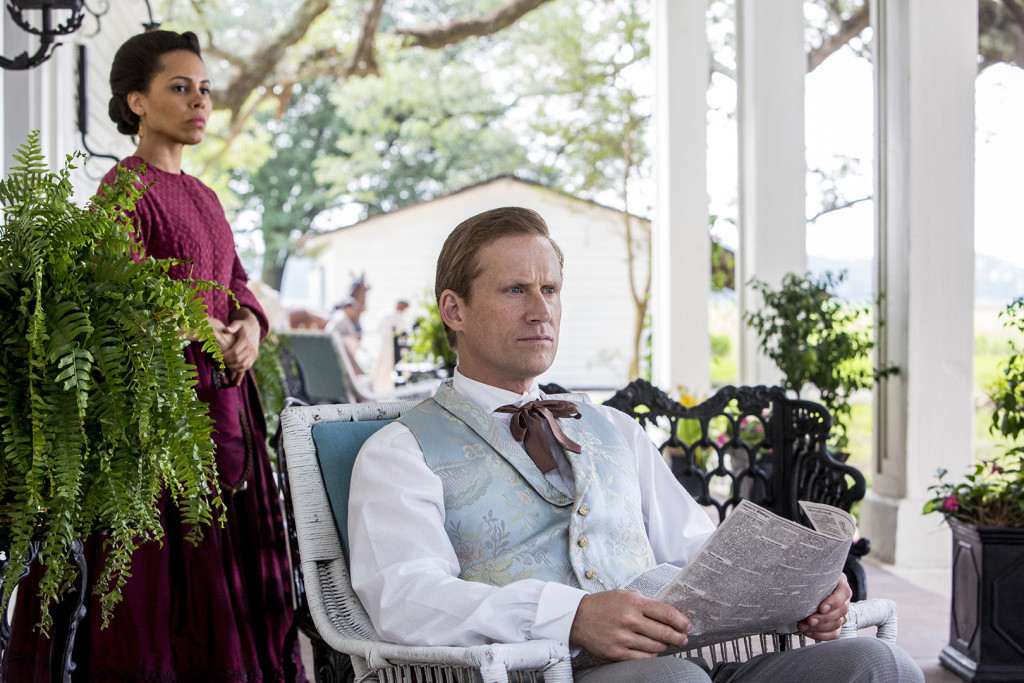
There are many scenes that are terrible to watch, but the scene that probably made me want to throw up the most was the juxtaposition of the little baby’s funeral (the baby who was killed by its mother, who didn’t want it to grow up in slavery) to the birthday of Tom and Suzanna’s daughter Mary. That, coupled with the family sitting down at dinner and being waited on by the house slave staff just made me want to scream to the rafters. But these scenes are also important because it shows how ugly the phenomenon of white privilege is. Or, to put it another way for those who get blindsided by that term, I’ll use a phrase I’ve already used in this post: unearned privilege.
For those who either hate/feel offended by the term “white privilege” or don’t understand what it means, here’s the definition, per the students of The Social Construction of Whiteness and Women class at the University of Massachusetts, Amherst. (The page itself is housed by Mount Holyoke College):
White privilege is a set of advantages and/or immunities that white people benefit from on a daily basis beyond those common to all others. White privilege can exist without white people’s conscious knowledge of its presence and it helps to maintain the racial hierarchy in this country.
The biggest problem with white privilege is the invisibility it maintains to those who benefit from it the most. The inability to recognize that many of the advantages whites hold as a direct result of the disadvantages of other people, contributes to the unwillingness of white people, even those who are not overtly racist, to recognize their part in maintaining and benefiting from white supremacy.
The definition goes onto give examples, such as interpreting types of dressing, manners of speech, and general behaviors as being “racial neutral” when in fact, as the definition states, “they are white.” It ends with this:
“…White privilege is having the freedom and luxury to fight racism one day and ignore it the next. White privilege exists on an individual, cultural, and institutional level.”
The definition also quotes James Baldwin, who stated, “Being white means never having to think about it.”
What is great about Underground is that it makes a point to show not just how extreme white privilege can be in how it excused and upheld slavery, but how it works its way into even the most well-intentioned of people, like Elizabeth and Tom, who still have the option to decide if they want to help slaves or not, and for a while decided not to help slaves for the sake of building a family. White privilege is something that needs to be worked out of the American system. The sooner the better, because all of us are Americans and deserve true equality, not a system based on antiquated, racially-based ideas.
4. Underground is just plain good
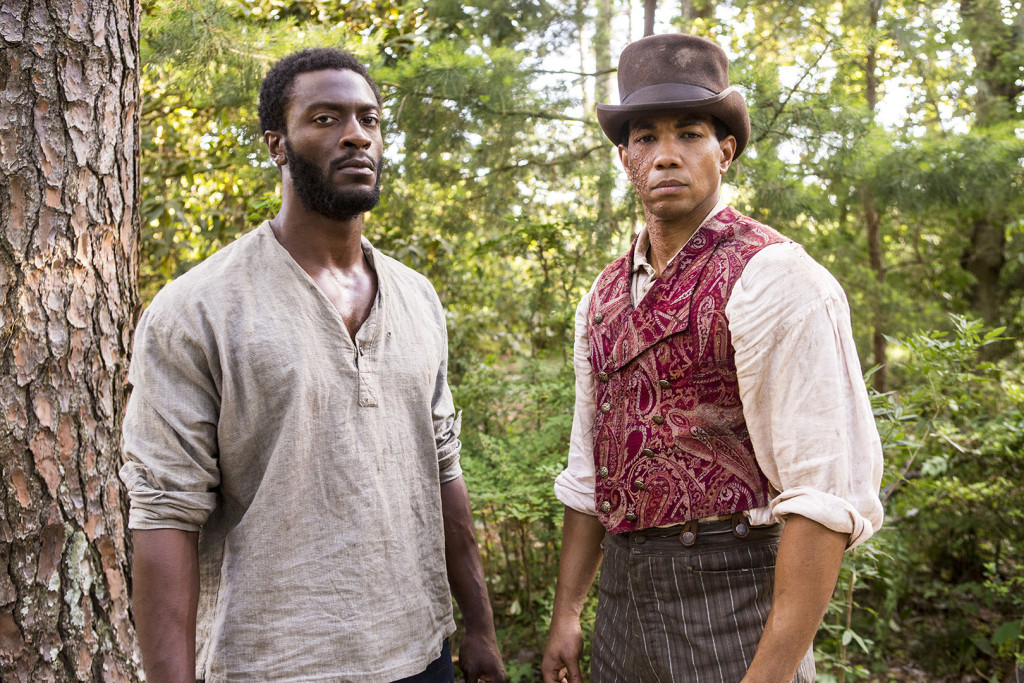
What else can I say? It’s terrific. It’s got no commercials, for one. Second, John Legend has proven himself to be a fantastic executive producer with this show; I’m still waiting on more news about that Thomas-Alexandre Dumas film. Third, it’s got a great cast: Aldis Hodge, Jurnee Smollett-Bell, Alano Miller, Amirah Vann, Jessica De Gouw, Renwick Scott, Mykleti Williamson, Marc Blucas, Reed Diamond, Adina Porter, Theodus Crane, Johnny Ray Gill and Christopher Meloni, to whom I tweeted this:
Hey @Chris_Meloni: Great job on #UndergroundWGN. This is what I’d say to your shifty character: pic.twitter.com/v3BccOEwgX
— Monique Jones (@moniqueblognet) March 10, 2016
Because weren’t we all rooting for Stabler to bop heads and take names? (There’s still time to stop being a wildcard and get on the right side of history, August Pullman! But his character also proves a point about white privilege; August can choose to play both sides—tricking the slave woman trying to escape by pretending to be a freedom fighter—solely for his own benefit.)
What do you love about Underground? Give your opinions below, and make sure to watch Underground Wednesdays at 10/9c on WGN America.
